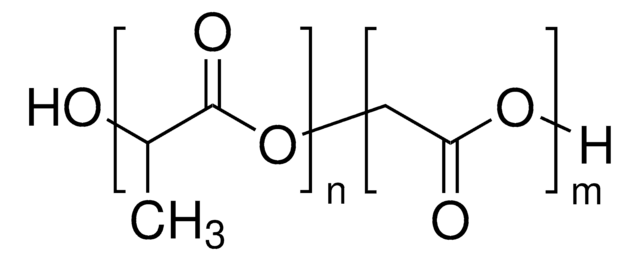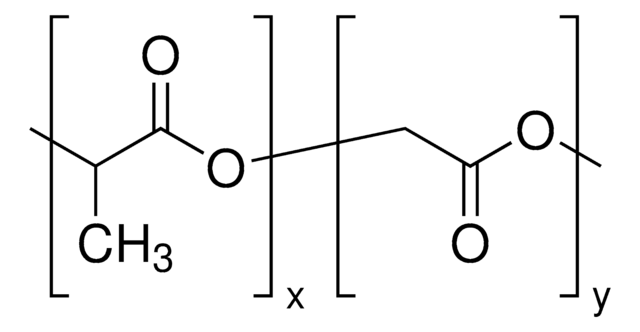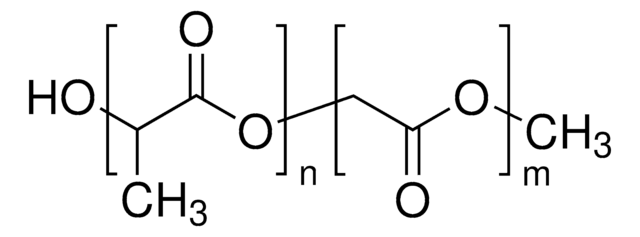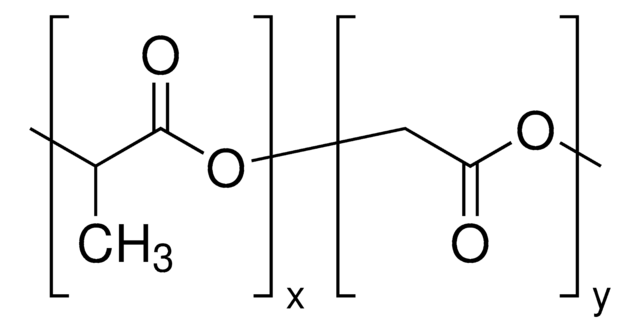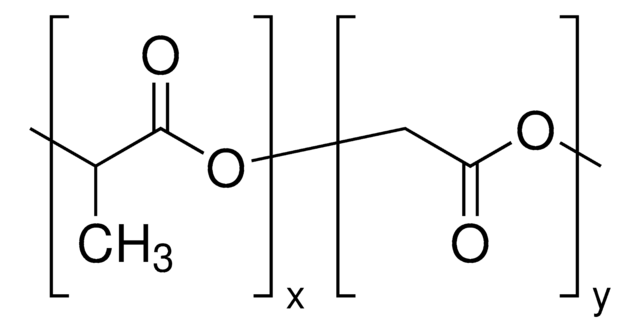719919
Resomer® RG 752 H, Poly(D,L-lactide-co-glycolide)
acid terminated, lactide:glycolide 75:25, Mw 4,000-15,000
Sinonimo/i:
PLGA
About This Item
Prodotti consigliati
Forma fisica
(Powder or Solid or Chunk(s))
Rapporto d’alimentazione
lactide:glycolide 75:25
PM
Mw 4,000-15,000
Tempo di degradazione
<6 months
Impurezze
≤0.1% Sulfated Ash (CONF0010 Conforms)
Viscosità
0.14-0.22 dL/g, 0.5 % in chloroform(25 °C, Ubbelohde) (size 0c glass capillary viscometer)
Temp. transizione
Tg 42-46 °C
Temperatura di conservazione
2-8°C
InChI
1S/C6H8O4.C4H4O4/c1-3-5(7)10-4(2)6(8)9-3;5-3-1-7-4(6)2-8-3/h3-4H,1-2H3;1-2H2
LCSKNASZPVZHEG-UHFFFAOYSA-N
Categorie correlate
Descrizione generale
Note legali
Prodotti correlati
Codice della classe di stoccaggio
11 - Combustible Solids
Classe di pericolosità dell'acqua (WGK)
WGK 3
Punto d’infiammabilità (°F)
Not applicable
Punto d’infiammabilità (°C)
Not applicable
Certificati d'analisi (COA)
Cerca il Certificati d'analisi (COA) digitando il numero di lotto/batch corrispondente. I numeri di lotto o di batch sono stampati sull'etichetta dei prodotti dopo la parola ‘Lotto’ o ‘Batch’.
Possiedi già questo prodotto?
I documenti relativi ai prodotti acquistati recentemente sono disponibili nell’Archivio dei documenti.
I clienti hanno visto anche
Articoli
Interest in utilizing biodegradable polymers for biomedical applications has grown since the 1960s.
Synthetic aliphatic polyesters dominate resorbable biomaterials in clinical use.
AliAliphatic polyesters, including polylactide and polyglycolide, are biodegradable polymers widely used in medical applications.
Immunosuppressive tumor-associated myeloid cells (TAMC) are responsible for glioblastoma (GBM) resistance to immunotherapies and existing standard of care treatments. This mini-review highlights recent progress in implementing nanotechnology in advancing TAMC-targeted therapies for GBM.
Il team dei nostri ricercatori vanta grande esperienza in tutte le aree della ricerca quali Life Science, scienza dei materiali, sintesi chimica, cromatografia, discipline analitiche, ecc..
Contatta l'Assistenza Tecnica.


